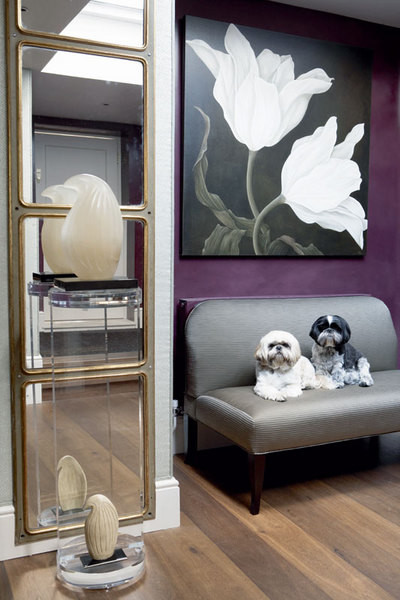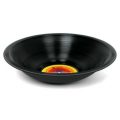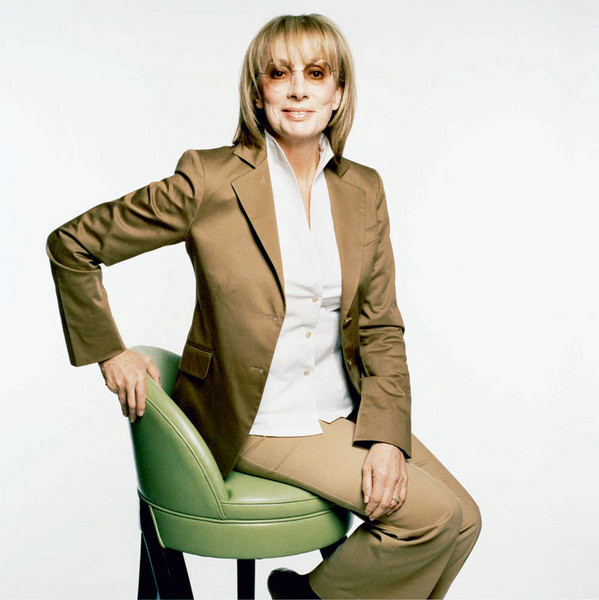 How to Decorate an InteriorNina CampbellDecorator,designer, head of the Nina Campbell Furniture bureau. She began her career at the famous Colefax & Fowler, but very soon opened her own business. Nina Campbell's interiors have embodied the spirit and style of an English home for 30 years. In addition to interiors, twice a year she releases a collection of furniture, textiles, gift wrap and home fragrances under her own brand. Twice a year she creates a collection of wallpaper, fabrics and braid for the Osborn and Little company. Winner of the national American Fashion Award in the category "Most Outstanding Designer of the Year", the Timeless Design Award of the national Royal Oak Foundation. Honorary Doctor of Middlesex University. Mother of three children and the author of three books. Nina is sure: the secret of her success is that when decorating someone's home, she leaves her own ambitions at the door and listens carefully to the desires and tastes of her clients. She works strictly within the allotted budget. She is not distracted by details and does not start selecting individual items, such as rugs or , until she understands what her design guidelines are: goals, priorities, limitations. She knows how and loves to mix classics and modernity, because this is the only way to create a timeless interior. But most importantly, Nina Campbell knows how to ask very specific questions and answer them very specifically. Try to use this scheme too. Tip 1. Before changing the interior, ask yourself a few questions
How to Decorate an InteriorNina CampbellDecorator,designer, head of the Nina Campbell Furniture bureau. She began her career at the famous Colefax & Fowler, but very soon opened her own business. Nina Campbell's interiors have embodied the spirit and style of an English home for 30 years. In addition to interiors, twice a year she releases a collection of furniture, textiles, gift wrap and home fragrances under her own brand. Twice a year she creates a collection of wallpaper, fabrics and braid for the Osborn and Little company. Winner of the national American Fashion Award in the category "Most Outstanding Designer of the Year", the Timeless Design Award of the national Royal Oak Foundation. Honorary Doctor of Middlesex University. Mother of three children and the author of three books. Nina is sure: the secret of her success is that when decorating someone's home, she leaves her own ambitions at the door and listens carefully to the desires and tastes of her clients. She works strictly within the allotted budget. She is not distracted by details and does not start selecting individual items, such as rugs or , until she understands what her design guidelines are: goals, priorities, limitations. She knows how and loves to mix classics and modernity, because this is the only way to create a timeless interior. But most importantly, Nina Campbell knows how to ask very specific questions and answer them very specifically. Try to use this scheme too. Tip 1. Before changing the interior, ask yourself a few questions
Tip 2. Questions for each room
“I never sacrifice comfort for aesthetics.And I try to bring at least a drop of irony into every room." Tip 3. Don't be afraid to combine the incompatible I don't like rooms that look like showrooms. The interior should have a slight "crookedness". Eclecticism is much more fun than a strictly maintained historical style. If you feel that it is yours, then it is acceptable. The only thing I can't put up with is dirty or broken things. An untidy bed is terrible. Going to bed in an unmade bed in the morning is completely unacceptable for me. Tip 4. Don't overdo it with red and white Your northern latitudes lack warmth and light. But painting every other room red and white is not the best solution. A red interior will more closely resemble a bloody blockbuster. One red room is quite enough. It can be a hallway or an office. As for the lack of light, I am sure that such rooms cannot be saved with white paint. To somehow enliven the space, it is better to use saturated colors. If the trees outside the window are bare most of the year, hang red and orange curtains. They let in light, painting everything around in warm tones, so even in winter it seems that the summer sun is shining into the rooms. Tip 5. The right accessories will help change the interior with minimal effort I choose pillows, braid, lampshades and other home accessories in the same way as I would choose shoes or a handbag for a suit. The right shoes can completely change your look - and vice versa, if you are wearing the wrong shoes, you will feel old-fashioned even in a very beautiful dress. Pay more attention to home accessories, do not keep faded pillows for years if it is time to throw them out. If you really like a bright fabric, consider using it in small interior items, such as pillows or armchairs, where it will look less intrusive than, say, on sofas or as curtains. Another advantage of accessories is that they are easy to change. From June 1 to July 1, 2008, in the settlement of "Ecoestate Pavlovskaya Sloboda" near Moscow, you could examine in detail a house decorated by the English decorator Nina Campbell. Naturally, we took the opportunity to show you this interior.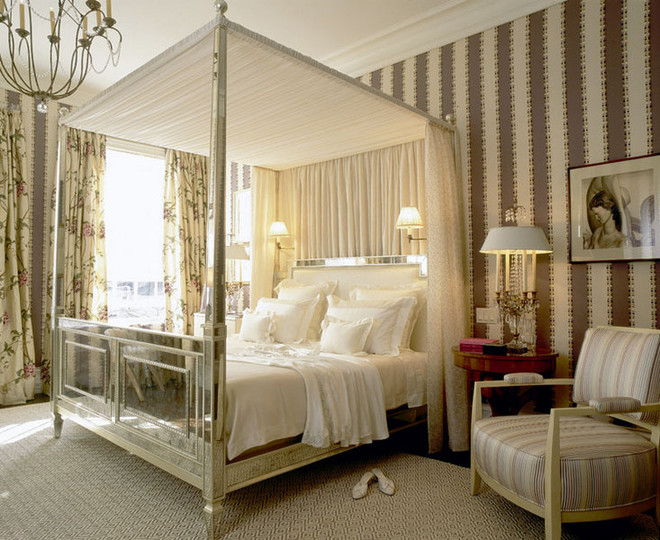 Opposites stretch to each other: the old and the new, the traditional and the folk, the East and the West.
Opposites stretch to each other: the old and the new, the traditional and the folk, the East and the West.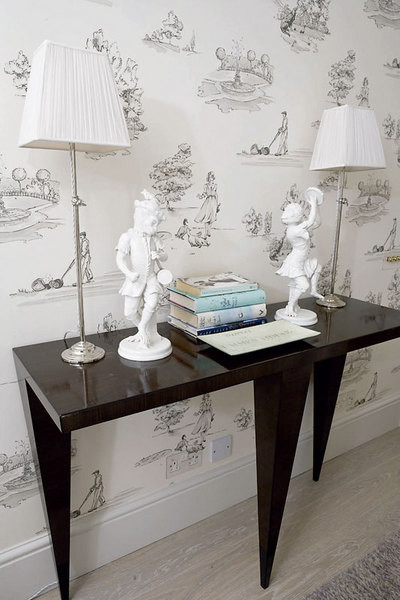 Pattern on the wallpaper and porcelain figures echo and complement each other. Such compositions enrich the interior.
Pattern on the wallpaper and porcelain figures echo and complement each other. Such compositions enrich the interior.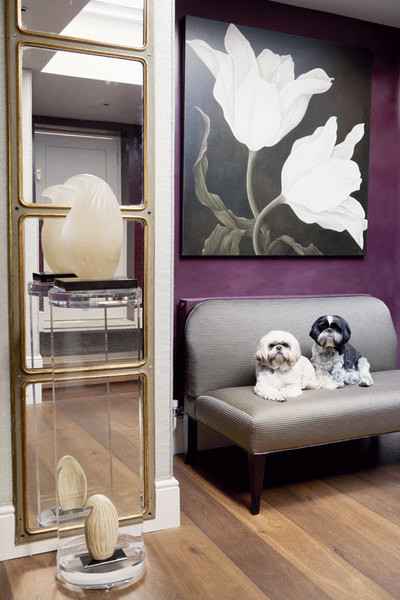 Well, when in the living room and there is a ceiling light, and floor lamps, and sconces. Each sofa and armchair should have its own light source.
Well, when in the living room and there is a ceiling light, and floor lamps, and sconces. Each sofa and armchair should have its own light source.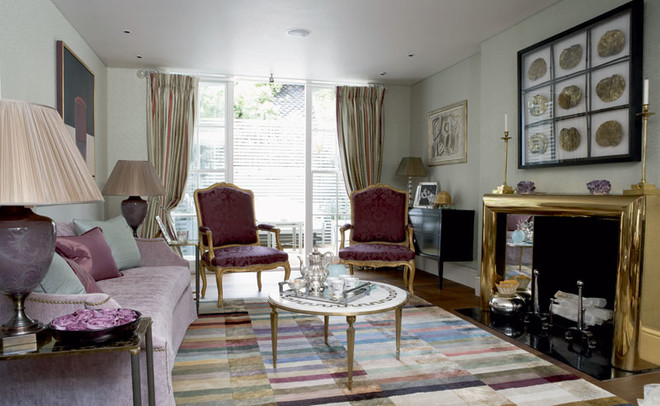 In the living room must be dominant. For example, a fireplace. The family often gathers in this room, so it is here that family heirlooms are kept. I have this chair, inherited from my father. As a child I loved climbing with them. If the room has a high window, do not close it with a lambrequin.
In the living room must be dominant. For example, a fireplace. The family often gathers in this room, so it is here that family heirlooms are kept. I have this chair, inherited from my father. As a child I loved climbing with them. If the room has a high window, do not close it with a lambrequin.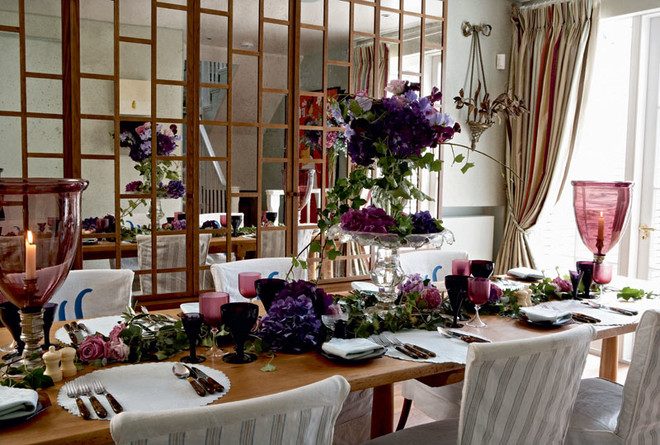 Mirrors are very refreshing interior, but you need to be careful with them. It is better to separate them into frames.
Mirrors are very refreshing interior, but you need to be careful with them. It is better to separate them into frames.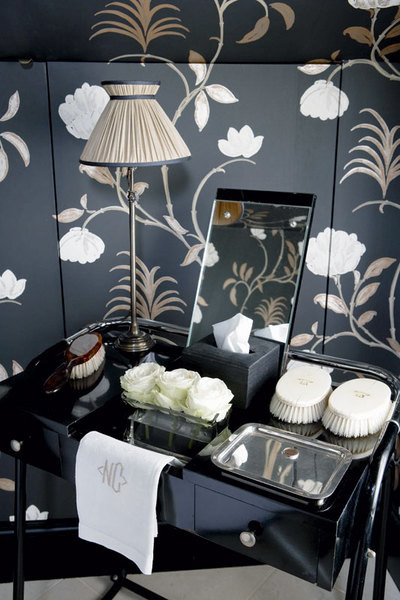 Guest bedroom or bathroom - the perfect springboard for decorating experiments. Here you can use very bright colors and extravagant forms.
Guest bedroom or bathroom - the perfect springboard for decorating experiments. Here you can use very bright colors and extravagant forms.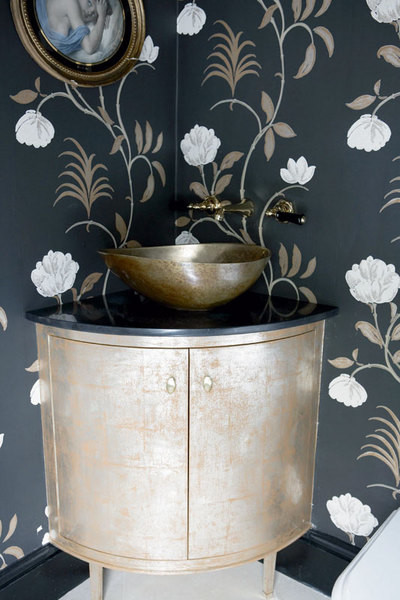 Guest bedroom or bathroom - the perfect springboard for decorating experiments. Here you can use very bright colors and extravagant forms.
Guest bedroom or bathroom - the perfect springboard for decorating experiments. Here you can use very bright colors and extravagant forms.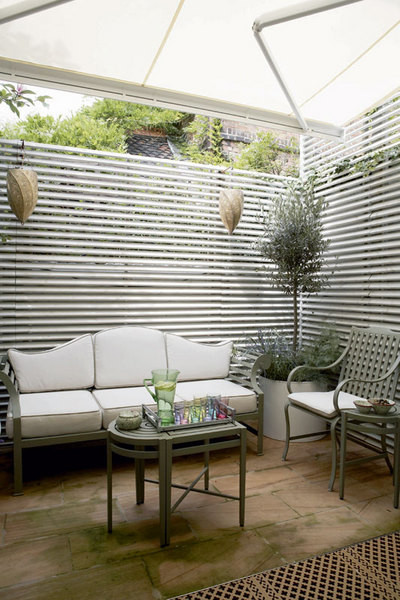
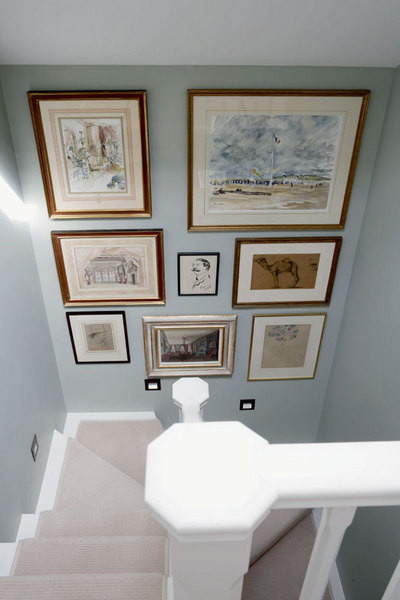 The stairs are the perfect place for a home art gallery. Top spotlights look bad on stairs. It is better to use the lower light.
The stairs are the perfect place for a home art gallery. Top spotlights look bad on stairs. It is better to use the lower light.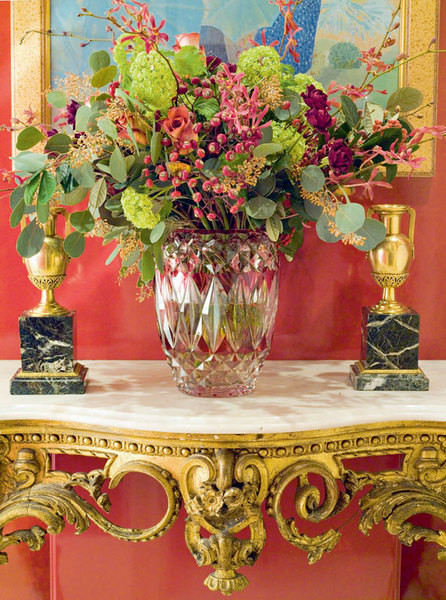 Red is also great for the hall and is associated with a warm welcome.
Red is also great for the hall and is associated with a warm welcome.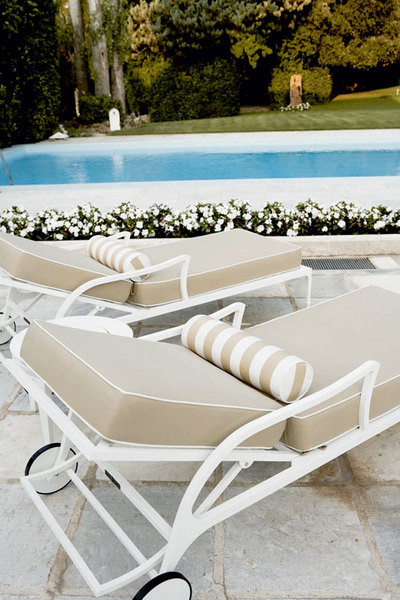
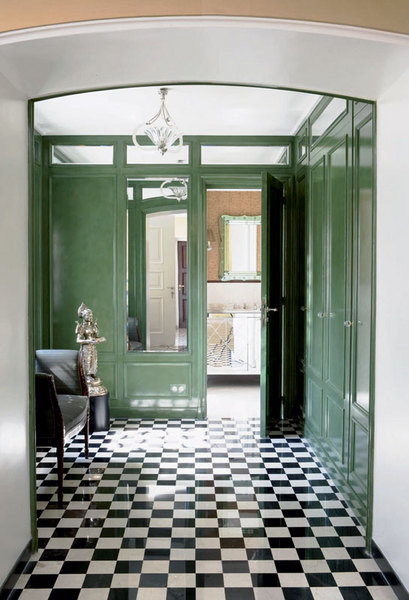 Starting point for creating this interiorbecame the jade Buddha. The wooden panels are covered with glossy green paint that blends perfectly with the black and white marble floor. In the hallway is very important to give a "powerful charge" of energy.
Starting point for creating this interiorbecame the jade Buddha. The wooden panels are covered with glossy green paint that blends perfectly with the black and white marble floor. In the hallway is very important to give a "powerful charge" of energy.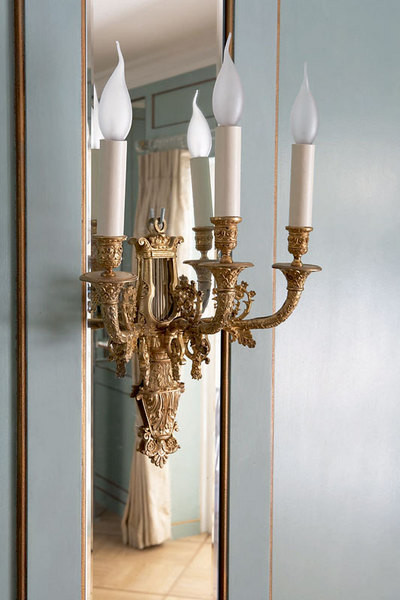
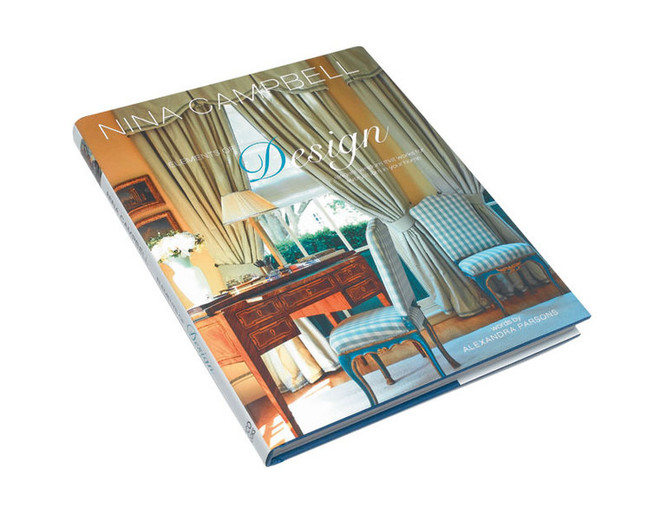
 Nina Campbell: “I don’t like rooms like showrooms. The interior should be light "curvature". Eclecticism is much more fun than strictly sustained historical style. ”
Nina Campbell: “I don’t like rooms like showrooms. The interior should be light "curvature". Eclecticism is much more fun than strictly sustained historical style. ”